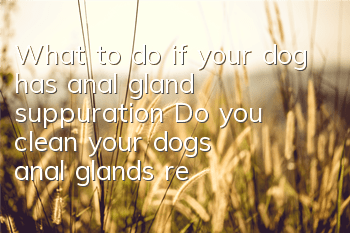Causes of anal sac gland suppuration in dogs
There are two anal sac glands in the dog’s anus, one on each side of the anus. There are two openings, located at the junction of the anus skin and mucous membrane, equivalent to the 4 o'clock and 8 o'clock positions on the clock. The lining of the cyst glands produces gray or brown secretions with a strange odor. If the opening of the anal gland is blocked or infected due to bacteria, secretions will accumulate. Cause anal rub or abscess.
Symptoms of anal sac suppuration in dogs
The initial symptom is anal rubbing, rubbing the anal area in a dog-lying position, and multiple verbal attempts to bite the anal area. The anus becomes hard and sensitive. When infected, the anus becomes red, swollen, painful, refuses to be touched, and has gray or brown discharge. The smell is bad. In severe cases, the skin of the anus may rupture, red or brown liquid may flow out, and there may be difficulty in defecation, followed by rectal constipation.
Treatment methods for dog anal sac gland suppuration
No complications were found due to excretory duct obstruction. The endocrine secretion of the cyst can be discharged by using the pressure method. Wear gloves, apply paraffin oil to the anus, insert the index finger into the anus, and press the outside of the anus with the thumb to discharge the endocrine secretion of the cyst. In case of secondary infection, the secretions in the anal sac should be drained first, and then the capsule should be flushed with saline. Broad-spectrum antibiotics are injected into capsules, and erythromycin ointment is also injected into local and anal bites. In chronic cases in which fistulas develop and are difficult to treat, surgical removal of the anal cyst gland should be performed.








